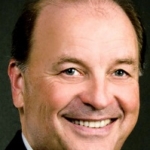Oregon Approves Integrative Treatments for Back and Spine Conditions
May 10, 2016
Breakthrough: Oregon Prioritizes Integrative Practitioners in Pain Treatment
by John Weeks, Publisher/Editor of The Integrator Blog News and Reports In an historic May 2, 2016 announcement, the Oregon Health Authority shared that “changes to the Prioritized List involving the treatments for conditions of the back and spine will be implemented on July 1, 2016.” The Back Policy Changes Fact Sheet details that under the new plan, the following integrative treatments are among the recommended therapies: acupuncture, chiropractic manipulation, cognitive behavioral therapy, osteopathic manipulation. And, “in addition, yoga, intensive rehabilitation, massage, and/or supervised exercise therapy are recommended to be included in the comprehensive treatment plans.” [Note that while naturopathic doctors are not specifically listed, they are fully included as primary care physicians in the state who are qualified to run patient centered medical homes, known in Oregon as Coordinated Care Organizations.]
In an historic May 2, 2016 announcement, the Oregon Health Authority shared that “changes to the Prioritized List involving the treatments for conditions of the back and spine will be implemented on July 1, 2016.” The Back Policy Changes Fact Sheet details that under the new plan, the following integrative treatments are among the recommended therapies: acupuncture, chiropractic manipulation, cognitive behavioral therapy, osteopathic manipulation. And, “in addition, yoga, intensive rehabilitation, massage, and/or supervised exercise therapy are recommended to be included in the comprehensive treatment plans.” [Note that while naturopathic doctors are not specifically listed, they are fully included as primary care physicians in the state who are qualified to run patient centered medical homes, known in Oregon as Coordinated Care Organizations.]  The decisions came following a review by the state’s interprofessional Health Evidence Review Commission (HERC). The Commission includes Kimberly Tippens, ND, MSAOM, MPH (pictured left), a naturopathic doctor, acupuncturist and researcher at the Helfgott Research Institute at the National College of Natural Medicine (NCNM). The HERC “based its decision on new evidence, including a bio-psychosocial model designed to help people with back problems resume normal activities.” The explanatory note adds that that they expect “this model will help people manage their pain with less reliance on medication and fewer costly surgeries.” The Fact Sheet also lists typical conventional treatments, though with cautionary remarks for those that are favored in most treatment: “medications (including short term opiate drugs, but not long term prescriptions)” and “surgery (only for a limited number of conditions where evidence shows surgery is more effective than other treatment options).” Notably, those continuing with current practices have been put on notice: “Coverage of surgical services and medications has been updated to align with evidence about optimal management of these conditions.” The second and third page of the Fact Sheet provide rationale for the decision and a time-line for the development and implementation. The anticipated result: “These changes will result in expanded coverage for the assessment and conservative treatment for uncomplicated back pain under the Oregon Health Plan.” Comment: This is not the first time that the state of Oregon has led the nation in integrative care. Think Oregon Collaborative for Integrative Medicine. The Naturopathic doctor-founded NCNM, Oregon College of Oriental Medicine, and the chiropractor-founded University of Western States have been turning out graduates in that community for decades. For years, the deeply interprofessional Oregon Pain Commission Members have included integrative practitioners, including Kevin Wilson, ND, DAPM and David Eisen, LAc, MSW. As noted, naturopathic-centric integrative clinics like the Center for Natural Medicine, founded by Martin Milner, ND, are approved Coordinated Care Organizations under the Oregon Health Plan. (See: Center for Natural Medicine: How Portland's Founding Naturopathic, Integrative Center Became a PCMH.)
The decisions came following a review by the state’s interprofessional Health Evidence Review Commission (HERC). The Commission includes Kimberly Tippens, ND, MSAOM, MPH (pictured left), a naturopathic doctor, acupuncturist and researcher at the Helfgott Research Institute at the National College of Natural Medicine (NCNM). The HERC “based its decision on new evidence, including a bio-psychosocial model designed to help people with back problems resume normal activities.” The explanatory note adds that that they expect “this model will help people manage their pain with less reliance on medication and fewer costly surgeries.” The Fact Sheet also lists typical conventional treatments, though with cautionary remarks for those that are favored in most treatment: “medications (including short term opiate drugs, but not long term prescriptions)” and “surgery (only for a limited number of conditions where evidence shows surgery is more effective than other treatment options).” Notably, those continuing with current practices have been put on notice: “Coverage of surgical services and medications has been updated to align with evidence about optimal management of these conditions.” The second and third page of the Fact Sheet provide rationale for the decision and a time-line for the development and implementation. The anticipated result: “These changes will result in expanded coverage for the assessment and conservative treatment for uncomplicated back pain under the Oregon Health Plan.” Comment: This is not the first time that the state of Oregon has led the nation in integrative care. Think Oregon Collaborative for Integrative Medicine. The Naturopathic doctor-founded NCNM, Oregon College of Oriental Medicine, and the chiropractor-founded University of Western States have been turning out graduates in that community for decades. For years, the deeply interprofessional Oregon Pain Commission Members have included integrative practitioners, including Kevin Wilson, ND, DAPM and David Eisen, LAc, MSW. As noted, naturopathic-centric integrative clinics like the Center for Natural Medicine, founded by Martin Milner, ND, are approved Coordinated Care Organizations under the Oregon Health Plan. (See: Center for Natural Medicine: How Portland's Founding Naturopathic, Integrative Center Became a PCMH.)  Not surprisingly then, the HERC Task Force was also an integrated group. Membership included the top political figures in the state for chiropractic, Vern Saboe, DC (pictured right), and for acupuncture, Laura Ocker, LAc (pictured below). And as the leaders of interprofessional practice and education know, the move toward respectful team-based care comes when practitioners learn “about, from and with each other.” They need to be in the same room and at the same tables.
Not surprisingly then, the HERC Task Force was also an integrated group. Membership included the top political figures in the state for chiropractic, Vern Saboe, DC (pictured right), and for acupuncture, Laura Ocker, LAc (pictured below). And as the leaders of interprofessional practice and education know, the move toward respectful team-based care comes when practitioners learn “about, from and with each other.” They need to be in the same room and at the same tables.  Disturbingly, as reported here, the recent national policy setting of neither the Center for Disease Control nor the US Health and Human Services nor the early Obama team behind his $1.1-billion opioid strategy had enough respect for interprofessionalism or for integrative services to bring these to the table. Thus the potential for shifting the therapeutic order of the nation relative to opioids and pain care - as Oregon is doing here - was poisoned from the planting. We reap what we sow. It is long past time to seed every single one of these tables with clinicians and researchers who have the skills and inclusive perspectives to drive us out of this crisis. Notably, this direction beautifully reflects that which Group Health Research Institute back pain researcher Dan Cherkin, PhD has previously recommended.
Disturbingly, as reported here, the recent national policy setting of neither the Center for Disease Control nor the US Health and Human Services nor the early Obama team behind his $1.1-billion opioid strategy had enough respect for interprofessionalism or for integrative services to bring these to the table. Thus the potential for shifting the therapeutic order of the nation relative to opioids and pain care - as Oregon is doing here - was poisoned from the planting. We reap what we sow. It is long past time to seed every single one of these tables with clinicians and researchers who have the skills and inclusive perspectives to drive us out of this crisis. Notably, this direction beautifully reflects that which Group Health Research Institute back pain researcher Dan Cherkin, PhD has previously recommended.



















SHARE